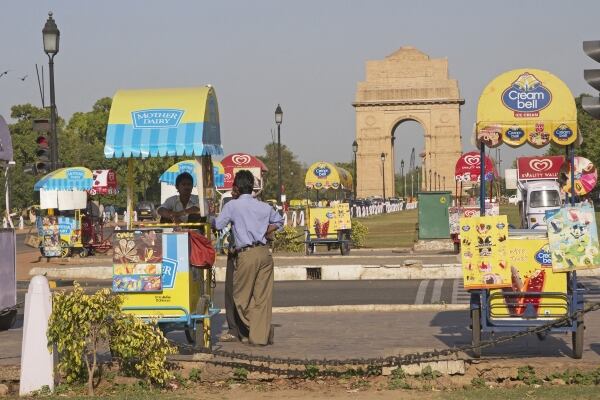Several factors are responsible for an increasing number of international ice cream brands entering the Indian market, including improving cold storage facilities, changing consumer taste and an increase in purchasing power.
India is the largest producer of milk in the world, accounting for more than a fifth of global milk production, although west India dominated the ice cream market in the country in 2015.
This is expected to continue, according to TechSci, because of the presence of leading players in the ice cream market in India such as Gujarat Cooperative Milk Marketing Federation, National Dairy Development Board, and Vadilal.
Opportunities available
Ruchit Mahendru, research consultant with TechSci Research told DairyReporter that there is plenty of room in the market for more companies, however.
“The ice cream market in India has been eyed by foreign companies for many years which are slowly penetrating the market,” Mahendru said.
Top flavors in India
Ruchit Mahendru, research consultant, TechSci Research:
Top classic flavors in India: Chocolate, Vanilla, Strawberry and Mango, along with variations like cookies n cream, choco-vanilla etc.
Most popular traditional flavors: Kesar pista, pista kulfi.
The major companies offer the same flavors throughout the country.
Companies are now releasing flavors that appeal to specific regions – Mother Dairy launched the Nolen Gur flavor to appeal to the Bengali community to expand their market in the Eastern region.
He said that, in 2013, US company Mini Melts launched in Bangalore with the aim of making their products available through 1,200 outlets throughout the country by 2016.
Domestic companies like Naturals and Giani’s Ice Cream have a wide regional penetration.
But, he added, new domestic companies are offering more novel and other quality products to the market that also includes giant companies such as Amul and Mother Dairy.
Challenges to deal with
The Indian market, however, is not without its challenges for companies eyeing the country for its growth potential.
Mahendru said that companies entering the market have to compete with the unorganized sector, which is hard to track.
Also, dealing with the existing companies in the market, such as Amul and Mother Dairy, who have built trust among their customers over the years, is difficult.
“Supply chain management is another challenge in the Indian ice cream market,” he said.
“Companies looking to expand into rural areas have to deal with the lack of cold storage and transportation facilities, which is not as advanced when compared to other countries.”
The high price of raw materials is also a major challenge.
Mahendru said that because of the rising prices of raw materials, many companies are switching to cheaper substitutes, which can be an issue as the government has imposed strict regulations on the composition of the raw materials for ice cream.
The Food Safety and Standards Authority of India (FSSAI) has regulated that ice cream should have 10 to 18% milk fat, depending on the type of ice cream.
Selling ice cream
The format for selling ice cream is similar to in other countries.
Mahendru said that ice cream in India is mostly consumed in cups, bars, cones, bricks and tubs.
“Bricks and tubs are popular for occasions like marriages and gatherings, whereas sticks and cones are popular as these products offer portioned packaging and have a wide variety of flavors.”
He added that artisanal vendors sell ice creams in cones and tubs through their exclusive stores.
“Other than exclusive stores, push-kart is a popular vending point for bar and cone ice creams,” he said.

“For instance, India Gate (Delhi) is one of the largest selling points for ice cream in India. On a busy weekend, more than 300 push-karts line up in the area to serve the tourists.”
Emphasis on urban centers
While selling ice cream in rural areas can present a challenge, ice cream is not restricted to urban centers.
Many unorganized players have set up ice cream businesses in rural areas, Mahendru said, thanks to the improvement in cold storage facilities. Organized players like Amul, Mother Dairy, Vadilal and other regional players have set up shops in rural areas.
“However, since most of the high earning population lives in the big urban centers, a major part of the Indian ice cream market is driven by the consumers living in these centers.
“Moreover, foreign companies like Häagen-Dazs and Mövenpick are targeting the affluent sector of the population, which resides mostly in high-end urban areas.”
Technological advances
The Indian ice cream sector has expanded greatly thanks to technology, Mahendru said.
“The cold chain has seen significant improvement over the years, allowing the manufacturers to connect to remote areas without the loss of product.
“Major companies are now able to set up shops in these distinctive areas, thanks to the availability of cold storage facilities like deep freezers and chillers to store ice cream.”
The report, "India Ice Cream Market By Type, By Organized Vs Unorganized Sector, By Category, Competition Forecast & Opportunities, 2011-2021," is available from TechSci research.
